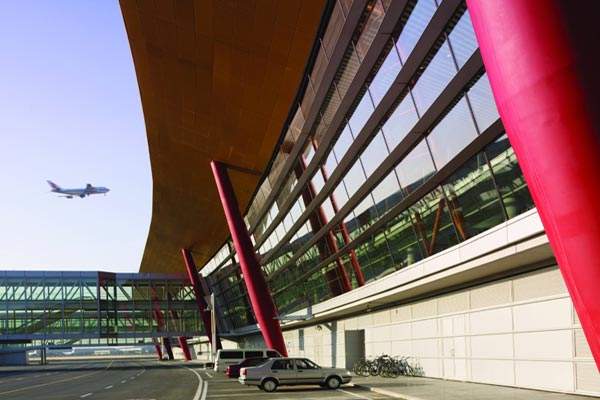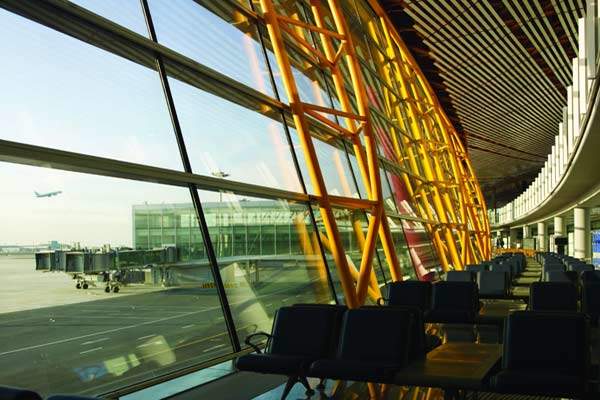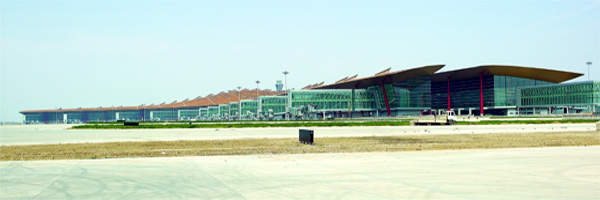Beijing’s new international terminal is the world’s largest and most-advanced airport building − not only technologically, but also in terms of passenger experience, operational efficiency and sustainability.
Completed as the gateway to the city for athletes participating in the 29th Olympiad, it is designed to be welcoming and uplifting. Its soaring aerodynamic roof and dragon-like form celebrate the thrill and poetry of flight and evoke traditional Chinese colours and symbols.
Beijing International terminal and GTC
Located between the existing eastern runway and the future third runway, the terminal building and ground transportation centre (GTC) enclose a floor area of 1.3 million square metres and will accommodate an estimated 50 million passengers a year by 2020.
Designed for maximum flexibility to cope with the unpredictable nature of the aviation industry, it aims to resolve the complexities of modern air travel, combining spatial clarity with high service standards. Public transport connections are fully integrated, walking distances for passengers are short, with few level changes, and transfer times between flights are minimised.
Like Chek Lap Kok, the terminal is open to views of the outside and planned under a single unifying roof canopy, whose linear skylights are both an aid to orientation and a source of daylight − the colour cast changing from red to yellow as passengers progress through the building.
The terminal building is one of the world’s most sustainable, incorporating a range of passive environmental design concepts, such as the south-east orientated skylights, which maximise heat gain from the early morning sun, and an integrated environment-control system that minimises energy consumption.
In construction terms, its design optimised the performance of materials selected on the basis of local availability, functionality, application of local skills, and low cost procurement. Remarkably, it was designed and built in just four years.










